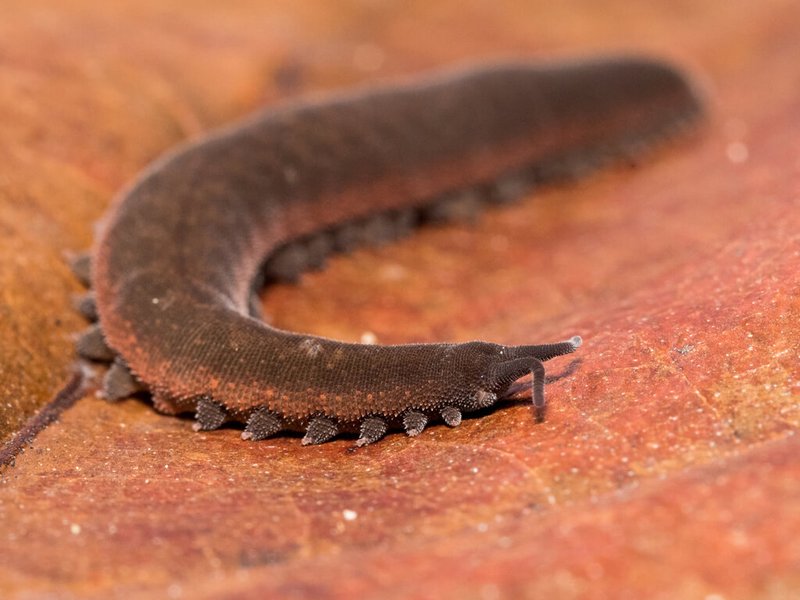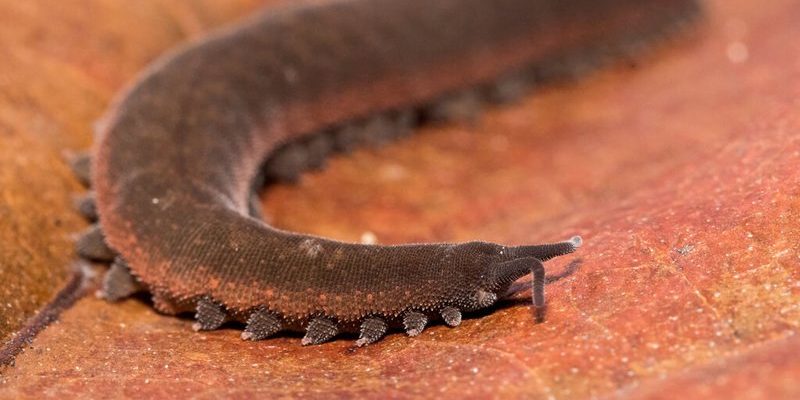
Velvet worms are part of a group called Onychophora, and they have a unique charm combined with an ancient lineage. These soft-bodied invertebrates have earned their place in Earth’s evolutionary tale as living fossils. With their ability to adapt and thrive in various environments, they hold secrets that inform us about survival and resilience. So, grab a cup of coffee and let’s dive into the wondrous world of velvet worm fossils and what they reveal about prehistoric survival.
What Are Velvet Worms?
Velvet worms, or *Peripatus*, are soft-bodied, segmented creatures that look like a cross between a caterpillar and an earthworm. They can be found mostly in humid forests around the world, hanging out in moist leaf litter. Their skin is covered in a velvety texture—hence the name—making them easy to identify.
These fascinating little guys have a few tricks up their sleeves. They can shoot a sticky substance from specialized glands to catch their prey, which mainly consists of small insects. This hunting method is not only effective but also unique, and it shows how evolution has sculpted them into efficient predators.
You might be wondering why they’re called “living fossils.” Well, velvet worms have hardly changed over millions of years. Their fossil records reveal a lineage that dates back to the Cambrian period, around 500 million years ago. This makes them a key to understanding how life on Earth has evolved.
The Importance of Fossil Records
Fossil records are like a time capsule of Earth’s history. They allow scientists to study how organisms have changed over time in response to their environment. For velvet worms, the fossils provide intriguing insights into their biology and give us clues about the climates they thrived in.
One of the most exciting aspects of studying velvet worm fossils is their ability to shed light on ancient ecosystems. By analyzing these fossils, researchers can piece together what the world was like millions of years ago. For example, they can identify what types of plants and other animals coexisted with velvet worms, helping to reconstruct entire ecosystems.
Moreover, these fossils help scientists understand the evolutionary adaptations that helped velvet worms survive through different geological eras. Each fossil serves as a breadcrumb in the larger narrative of life on Earth, illustrating the ongoing dance of survival and adaptation.
How Velvet Worm Fossils Are Formed
You might be surprised to learn that velvet worms don’t fossilize easily. Their soft bodies break down quickly after death, making it a challenge to find well-preserved specimens. However, a few conditions can lead to remarkable fossilization.
Typically, velvet worm fossils are found in sedimentary rocks, where layers of mud or sand encapsulate them soon after they die. This rapid burial protects their remains from decay and environmental factors that could destroy them. Over time, minerals can seep into their bodies, creating fossils that retain their shape and features.
The best places to find these fossils are often in regions where ancient oceans once existed. Fossils have been discovered in Europe and South America, offering crucial information about velvet worms’ distribution and habitat preferences through time.
Significant Velvet Worm Fossils in the Record
Throughout history, several significant velvet worm fossils have been unearthed. One of the most notable discoveries was made in 2014 in the southern part of China. This fossil was remarkable because it showcased the intricate details of the velvet worm’s body, revealing features like the arrangement of legs and eyes that were well-preserved over millions of years.
Another exciting find comes from a site in Argentina, where researchers unearthed fossils dating back to the Devonian period. These ancient specimens showed that velvet worms had already evolved some of their modern features, hinting at a long history of stability in form and function.
These significant fossils don’t just tell us about velvet worms themselves. They also help scientists better understand the conditions these creatures endured throughout history, giving us a snapshot of ancient ecosystems and climates.
Adaptations and Survival Strategies
Velvet worms have survived numerous challenges over the ages, and their adaptations are key to this success. Their ability to live in a variety of habitats—from lush rainforests to dry scrublands—demonstrates their versatility. One of their most remarkable strategies is their moisture retention. With a body designed to hold water, velvet worms can thrive in environments where other creatures struggle to survive.
Additionally, their predatory skills are incredibly effective. The sticky slime they produce isn’t just a cool party trick; it’s a survival tool. By capturing prey so effectively, velvet worms can sustain themselves in various ecosystems and remain a step ahead of predators.
You may also be surprised to know that velvet worms can reproduce both sexually and asexually, expanding their chances of survival. When conditions are just right, they can adapt their reproductive strategy, ensuring that the population can thrive even in changing environments.
Why Velvet Worm Fossils Matter Today
So, why should we bother with velvet worm fossils? Well, they aren’t just relics of the past; they’re vital to understanding biodiversity and the impact of climate change. As these worms have demonstrated immense adaptability over millions of years, studying their history can inform us today about resilience and survival.
Moreover, learning about the evolutionary history of such organisms adds depth to our knowledge of life on Earth. By understanding how past species adapted, we gain insights into how current species, including ourselves, might respond to ongoing environmental changes.
In a world facing challenges like climate change and habitat destruction, studying these living fossils reminds us of the delicate balance of life. Velvet worms reveal the interconnectedness of ecosystems and the importance of preserving them.
Velvet worms remind us that life is tenacious. Their long history, as documented through fossil records, showcases their ability to endure and adapt through time. As we peel back the layers of history, we discover more than just fascinating facts about a tiny creature; we uncover insights into the complex tapestry of life on Earth.
These ancient invertebrates invite us to reflect on the importance of resilience—both in nature and in our own lives. By understanding the survival strategies of velvet worms, we gain a deeper appreciation for the challenges all species, including ours, face today.
So, the next time you think of a velvet worm, remember that it’s not just a quirky little creature; it’s a testament to survival, adaptation, and the unending story of life on our planet.

